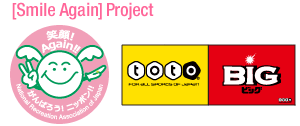Help out by donating to Recreational Volunteer Support Fund!
We are collecting donations in order to support Team Recrew's activities. The money will be used for the recreational volunteer programs.The bank transfer fee is free.
- Bank transfer details (Dedicated account for.)
Account name: National Recreation Association of JAPAN
[Mizuho bank(Code:0001), Toranomon branch(Code:046), a checking account No.2746628]
- We do not accept donations of goods.
- Contact details:
National Recreation Association of Japan, Department of General Affairs
E-mail: soumu@recreation.or.jp
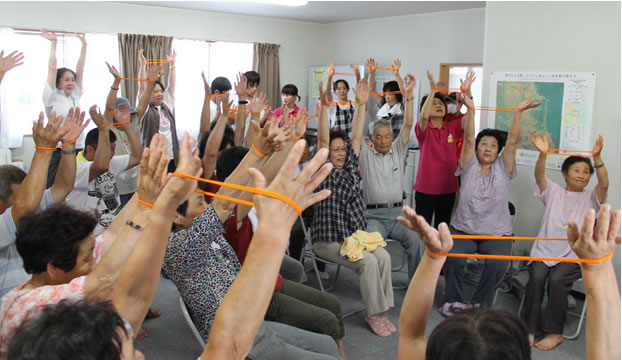
Many of the residents from Iitate village used to be farms and life in temporary homes doesn’t give them much opportunity to move their bodies. For this reason, they actively participated in activities and exercises.
Volunteer programs for the people living in temporary housing. - Fukushima prefecture and city recreation association.
Fukushima city recreation association has commenced a volunteer program for the people of Kitakansen Daiichi temporary housing located in Fukushima city. The people here are evacuees from the town of Namie, located near the 20km radius evacuation zone of Fukushima Daiichi nuclear power plant.
The first session took place on August 20 with approximately 30 participants, consisting of children and elderly. To begin with, they socialized and played with balloon art. The staff prepared coffee and tea, offering a relaxed atmosphere for the people.
Next was a game of rock-paper-scissors and shoulder massage, followed by stretch exercise and body workouts. There was even a temporary manicure parlor setup where the ladies could have their manicures done while socializing.
The town of Namie not only suffered from radiation but it also sustained damage from the Tsunami. Many of the residents from devastated districts such as Ukedo bay and Shiotana had to move from one evacuation centers to another. Today they have finally settled in temporary homes.
Many have expressed relief, saying “I’m so glad to be living amongst the people of my town” and “It’s been a good opportunity to forget about the tragic memory of the disaster in which I lost my home”.
Fukushima prefecture recreation association has begun conducting support activities at temporary homes located in Onodai, Soma city. The homes were setup for the people of Iitate village which lies within the planned evacuation zone of Fukushima Daiichi nuclear power plant.
The association’s second visit took place on September 18. On this day, the staff and the residents assembled storage boxes made of cardboard that was donated by a Higashi Osaka firm. The meeting hall filled with people assembling the boxes. During the hour in which they worked on the boxes, there was a lot of laughter as people sang songs and socialized.
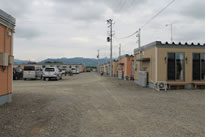
Approximately 200 houses have been erected at the Kitakansen Daiichi temporary housing. The volunteer program was held in its conference hall.
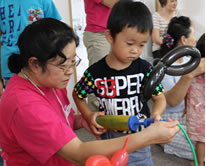
Children and volunteer staff were absorbed in making animal shapes with ropes.
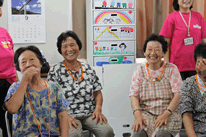
Tanohata village “Family get-together square” program - Iwate Kid’s Brigade
On September 4, the Iwate kid’s brigade volunteered for the “Family get-together square” in Tanohata village. In the recent disaster, two of the village’s six districts that were along the sea were devastated by the Tsunami. Six month on from the disaster, overgrown weeds have covered up the devastation, but the magnitude of the damage can still be seen in the wreckage of train stations and bridges.
The “Family get-together square” is an annual program organized by Tanohata village childcare center association to encouraging parent-child interaction. Considering that 1/3 of the families with children in care centers lost their homes in the recent disaster, the organizers sort the help of Iwate kid’s brigade to host a program to caters for the emotional wellbeing of the parents.
The program was designed by Mr. Takayuki Inoue, a recreation instructor and a school counselor. Two pediatricians also joined in the program. At nine o’clock in the morning, parents and children gathered in the gymnasium. With additional participation from near by temporary homes, altogether there were 45 families.
The event kicked off with Mr. Inoue singing a “Good morning” while playing a guitar.
Slowly, the children join the singing. After the kamishibai picture card shows, story telling and singing, the children were no longer shy. Led by the Iwate Kid’s brigade staff, they played all sorts of physical and musical games.
During the later half of the session, they had craft lesson where they leant to make a simple kendama. In the mean time, parents socialized and seeked advice from the pediatricians.
Ms. Atsuko Hatayama who founded the “Family get-together square” event says “Parents have been under stress and anxiety following the disaster and it’s not good for children to be seeing them in that state. That’s why I wanted to offer the parents a chance to have a break and relax”.
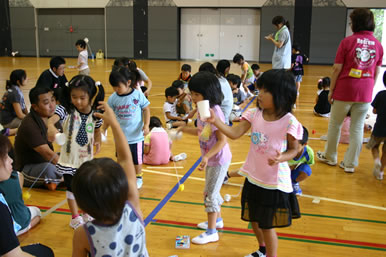 Children learnt how to make a simple kendama.
Children learnt how to make a simple kendama.
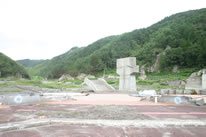
The area near Shimanokoshi station of Kita-Alice line. The costal regions of Tanohata village were devastated by the tsunami.
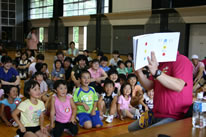
Singing and other ice breaker activities were held.
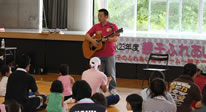
Recreational instructor Mr. Takayuki Inoue leads the program.
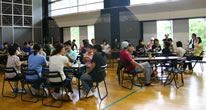
The Parents chat and relax with the pediatrician.
Over 400 volunteer programs in just six month from the disaster
Taking action three days on from the disaster
Looking back over past six month of post disaster recreational volunteers activities, we discovered that volunteers started began taking action within just three days from the disaster and the number of volunteer programs has surpassed 400.
One group that took immediate action was Shichigahama recreation association, based in Shichigahama, Miyagi prefecture. They began offering programs at evacuation centers in just a week after the disaster. The program was offered in response to the voices of local people who practiced physical active lifestyle for care prevention. In the beginning, the focus was on exercise, stretches and physical activities for preventing blood clots.
Many of the recreational volunteer programs began with the help of National Council of Social Welfare and the regional social welfare councils. Since the Great Hanshin Earthquake disaster, the importance of recreational volunteer activities has come to be widely recognized. So this time, a lot of evacuation centers welcomed recreational volunteer programs.
Wide range of programs tailored for the different needs of disaster affected areas
The volunteer activities were always tailored to the needs of disaster affected area in which it was being conducted. For example, exercise programs that were offered immediately following the disaster was designed for evacuees who were cramped up in evacuation centers with very little space. After several months when things began to settle, outdoor activity programs were offered.
The kinds of activities also varied with the location of evacuation centers. Areas that were devastated by the Tsunami became highly inaccessible by roads. In some cases, a one-way trip took two hours.
Because of this, Duration and time of programs were restricted. In contrast, some evacuation centers in urban areas had dedicated space for volunteer programs to suit the needs of evacuees, such as story telling for children, games, craft, and exercise programs.
Volunteer from other prefectures
The recreational volunteer activities were supported by volunteers from various prefectures.
The outdoor camping event that was held in August for the children for Fukushima was joined by many teachers and student who volunteered. Some had even come from regions as far as Kinki and Kyushu. The volunteer programs organized by the Miyagi prefecture recreation association also had students participating from Sendai University and Tohoku Fukshi University.
In addition, Fukushima prefecture received support from the National welfare recreation network and Iwate prefecture received support from the National schools recreation network. Furthermore, Tono city received support from Tono city social welfare council as well as from local volunteer organizations.
The Japan Recreation Association and along with prefectural recreation associations will continue to support the disaster affected areas through further volunteer programs.
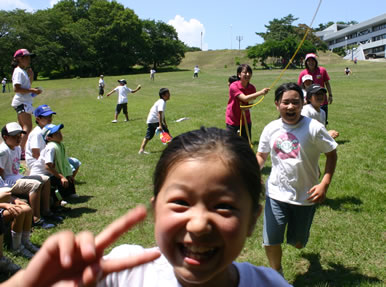 Starting with certified volunteer organizations, many students from certified schools joined in as volunteers.
Starting with certified volunteer organizations, many students from certified schools joined in as volunteers.
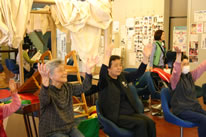
At some evacuation centers, volunteer activities were conducted in the entrance space.
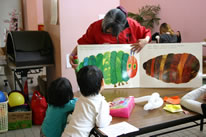
After the Great East Japan Earthquake, communities took on recreational volunteers straight away.
